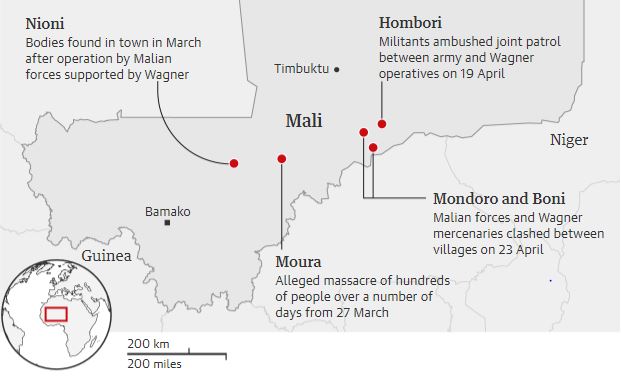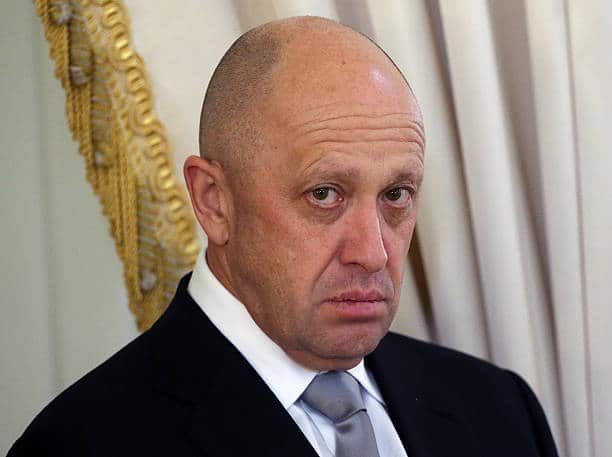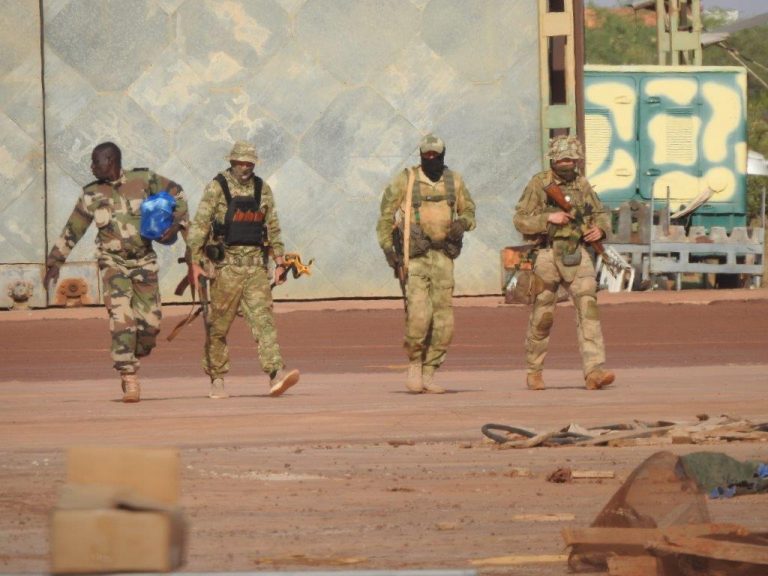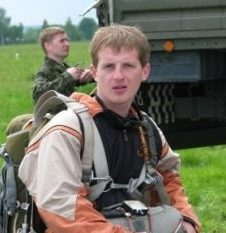Russian manipulation in Mali: a new turn in the information war
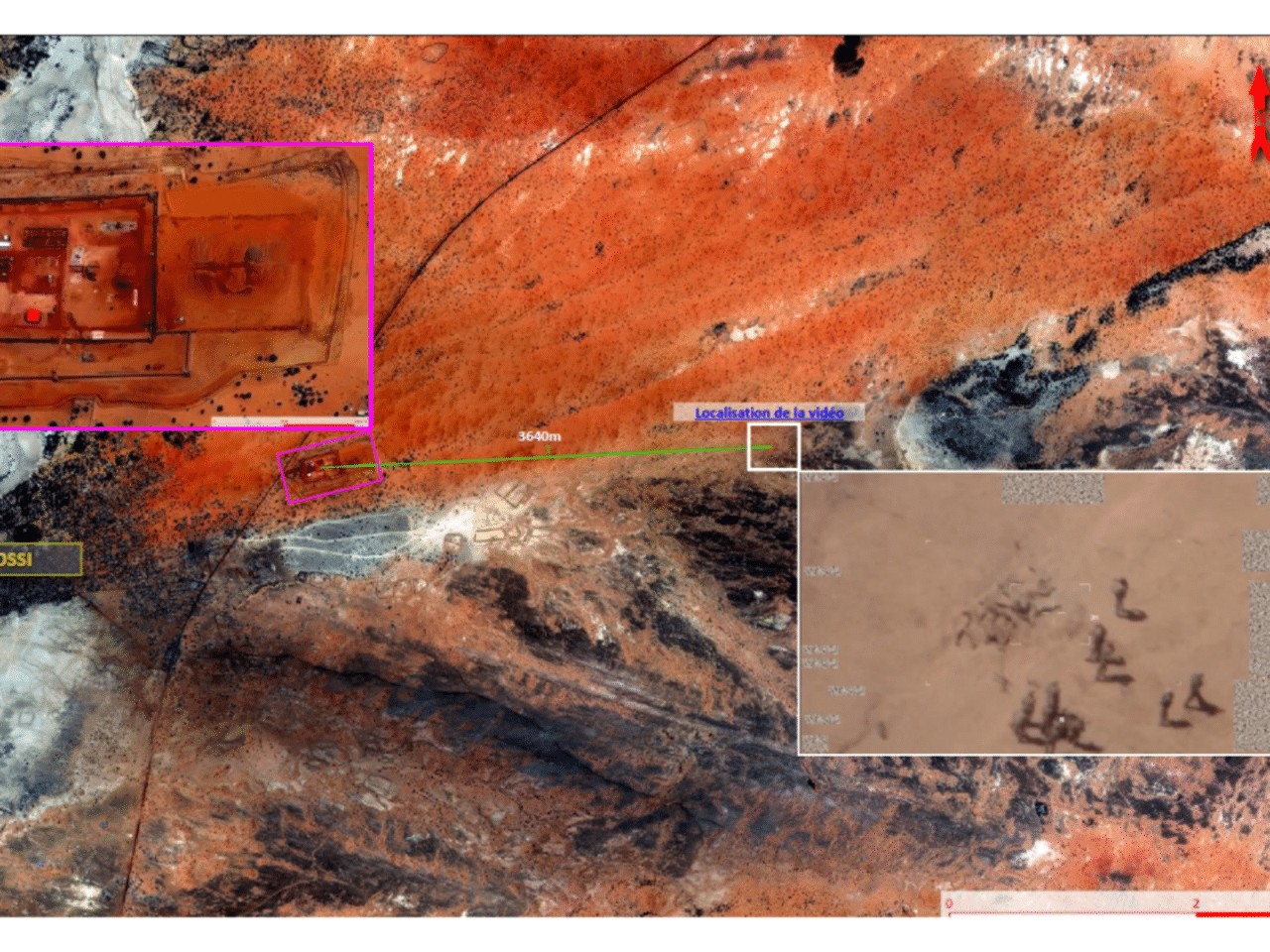
In recent years, Russia has been staging a comeback in West Africa, taking advantage of the growing insecurity and instability in countries facing rebellions and jihadist insurgencies. The Russian modus operandi has already been heavily documented. It is based on two main factors: information warfare and manipulation, and security services.
Both aspects are subcontracted to the private empire of Yevgeny Prigozhin, an oligarch close to the Kremlin. His fortune allows him to fund the infamous mercenary company “Wagner Group”, and a galaxy of media outlets and fake NGO’s promoting a narrative that glorifies Russia. Both are supported by a host of fake social network accounts used to amplify chosen information.
This style of info-warfare was thoroughly put to the test in the Central African Republic since 2018. It involves a mixture of anti-French and anti-UN fake news and a glorification of Wagner’s feats of arms. This model has since been exported to Mali, taking advantage of the local anti-French resentment. But on the 22nd of April, the method has reached a milestone with the fabrication of a “real” mass grave to accuse France’s armed forces of hiding civilian executions.
An organized and coordinated manipulation
The manipulation started soon after the return of the Gossi military base to the Malian Armed Forces (FAMa) on the 20th of April. Two days later, a Twitter account teased a video showing a mass grave 3km away from the base. The video was apparently circulating in several Whatsapp groups. Other users immediately highlighted the suspicious nature of the account, created in February 2022 with a profile picture directly borrowed from a Columbian account on Russian social network VKontakte. The picture was immediately changed to a portrait of Assimi Goïta, the head of the Malian junta. Using this image is a common practice among supporters of the regime, as well as by trolls and fake accounts.
But very shortly after, the French army released its own images captured by drone on the 21st, proving that the grave had in fact been fabricated by Caucasian soldiers the day before with the help of FAMa soldiers. The images were handed to French media outlets who quickly debunked the claim that the French army was behind the killing. Instead, the perpetrators were proven to be mercenaries from the Wagner Group.
It then became clear that it was all a coordinated manipulation, from the field (fabrication of counterfeit evidence) to social networks (accusation of France by fake accounts). The operation backlashed and became a demonstration of Wagner’s will to use even the most squalid tricks to forward its interests.
Trying to deflect the blame
Despite the tactical failure, pro-Russian accounts still tried to accuse France of the killing. A note from the Malian ministry of defense rejected all possibility that the FAMa were involved in the killing, while declaring that the decomposition of the corpses indicated that they were already there before the French left Gossi.
Colonel Dembele, chief of the DIRPA (Information and Public relations Directorate of the Army) later accused France of “subversion” and “espionage” under the premise that the drone was violating the overflight ban. This accusation was actually inconsistent with a previous statement that the video was a fake (suggesting that no drone actually filmed the scene). The Malian defense was also based on a timeline inconsistency: colonel Dembele announced that the corpses were discovered by the FAMA on the 21st, but the fake Twitter account Dia Diarra announced the discovery on the 20th.
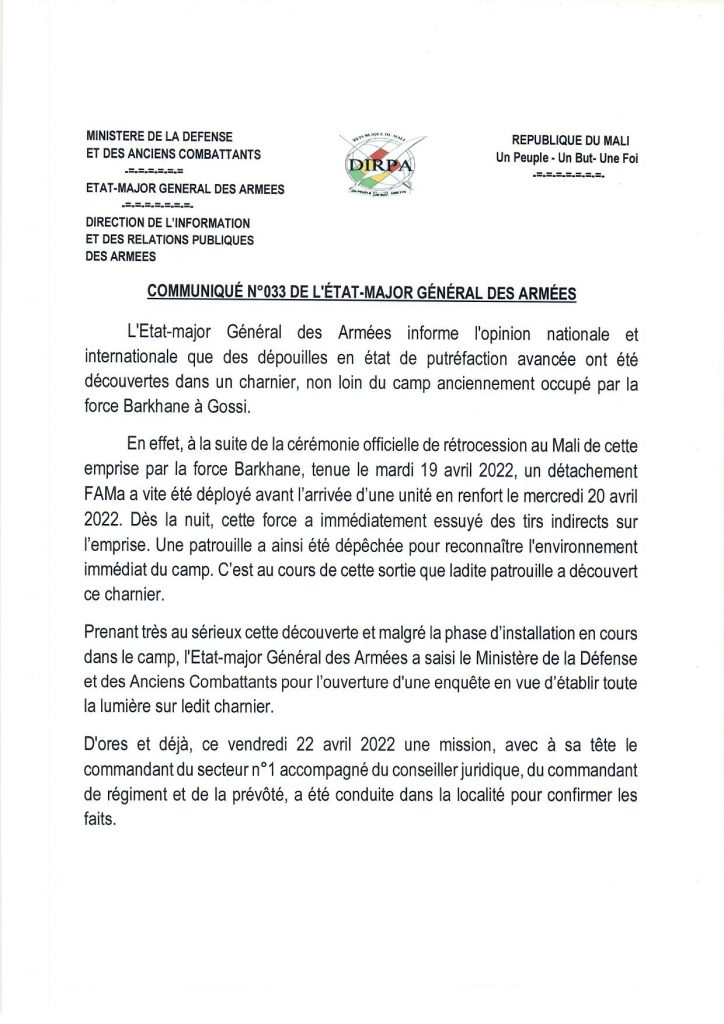

On social networks, the debate shifted to the issue of the origin of the corpses. Several Twitter users linked them to the arrest by Barkhane, France’s anti-terrorist operation in Sahel, of six suspects in Adiora on the 17th.
There again, the French reaction was swift as the general staff assured that two of the suspects had already been released, and the other four were still being interrogated. The International Red Cross keeps a permanent right of visit to these prisoners, proving their physical integrity and that they have no connection whatsoever to the mass grave. They were finally released on the 29th.
The corpses could most likely be from Hombori, another village in the region. There, a FAMa vehicle exploded on an IED on the 19th. The incident triggered the arrest of 611 people and the neutralization of 18, according to the FAMa communication department. Independent NGO “Médecins Sans Frontières” exposed the violent treatment of the civilian population during these events.
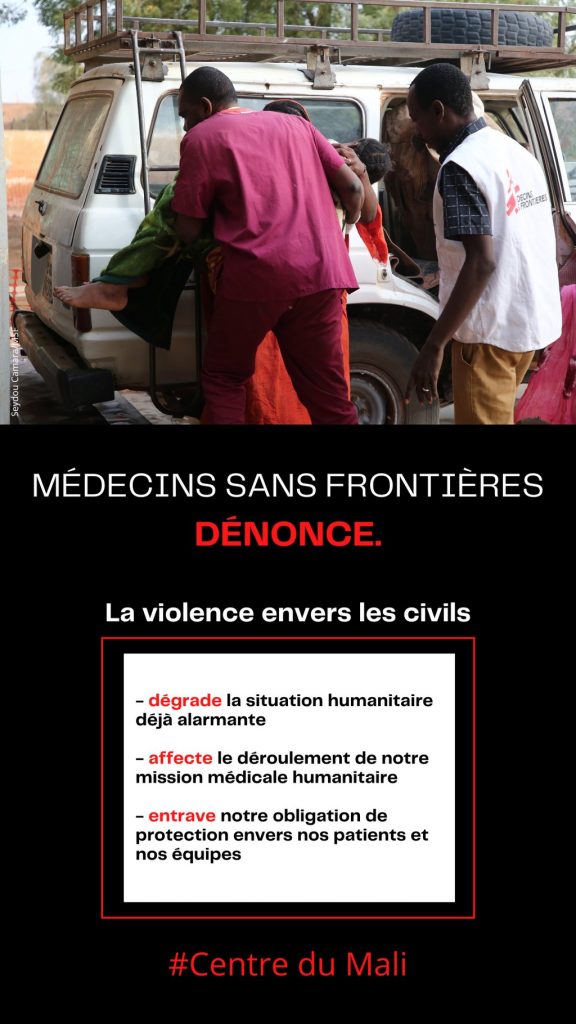
We can however note that the pro-Wagner narrative is still gaining traction among panafricanists and anti-French online communities. This is a reminder that even hard facts and proofs are not enough to convince a population that is being consistently misinformed and manipulated.
Was France expecting the operation?
The fact that the burial was recorded shows that the French army was expecting a Russian maneuver. There are several possibilities to explain this foresight. The first would be that Barkhane, aware of Wagner’s notorious record of manipulation, simply was expecting a low-blow following the cession of the Gossi base.
But it is also likely the general staff somehow had intel about what was going to happen. It is obvious that some high-ranking FAMa officers were aware of Wagner’s intention since Malian soldiers took part in the masquerade.
However it is also known that, while the junta demonstrates its alignment with their Russian ally on a daily basis, there are some slight disagreements on the matter. Not all ranking officers are happy with the new not-so-balanced partnership. Local sources also confirmed to us that there are soldiers among the FAMa that disagree with Wagner’s brutal methods. This fracture probably plays along the lines of power competition in Bamako: the junta’s hold on power is indeed still fragile. Let’s recall that there have been two coups in the past 2 years.
Could it then be possible that someone within the security apparatus leaked the information to the French military? While we cannot prove this hypothesis, one has to consider this possibility in a context of growing insecurity in Mali and the government’s incapacity to secure the country despite its triumphalist rhetoric.

